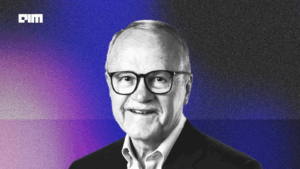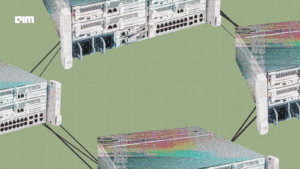Guillermo Rauch, the CEO of Vercel, believes the future of software isn’t about lines of code but conversations between intelligent systems. “It’s not going to be people meeting; it’s going to be agents meeting,” he said. “We can call it AI transformation. Every company will have to rethink itself—what Jensen Huang calls a ‘token factory.’”
At the center of this shift is V0, Vercel’s AI-powered text-to-code builder. Since launching in late 2024, it has generated more than 100 million applications and more than doubled the company’s user base. V0 allows users to describe what they want in natural language and get back a functioning application with no manual coding required.
“Vercel required engineering skills; this just requires having an idea,” Rauch said. “V0 allows you to convert text to an application—an idea to an actual app.”
Built initially by a team of four, V0 was conceived as a way to validate Vercel’s new AI infrastructure. Today, it supports full-stack development, with backend integrations into tools like Supabase and Salesforce Commerce Cloud. The product now operates with its own leadership under a general manager, giving it the independence of a startup within the company.
“Every second, there are seven app generations happening on V0,” Rauch noted.
Interface to Infrastructure
V0 reflects a broader philosophy inside Vercel: that the next phase of software development is agentic. Rather than building static interfaces for human users, companies will increasingly build systems designed for machines to access, interpret, and act on.
To support this shift, Vercel developed MCP, the Model Context Protocol. Described by Rauch as “HTTP for AIs,” MCP is a way for agents to interact with external systems and tools over the internet.
“If you’re Target, and you want your inventory to be available inside ChatGPT, you create an MCP server,” Rauch said. “Five lines of code. Now you’re interoperable with V0 and other agentic systems.”
This architecture is part of Vercel’s AI Cloud offering, which provides infrastructure to deploy and manage AI-native applications. The platform includes primitives for observability and security, including defenses against risks unique to agentic environments.
“There are already incidents of prompt injection attacks,” Rauch said. “Someone can encode a hidden instruction in an image, and the model will understand it—but a human won’t. So new kinds of security infrastructure are required.”
Developers and Their Agents
Vercel, which powers web experiences for companies like Stripe, OpenAI, Adobe, and Nike, is increasingly serving both human developers and their software counterparts. Rauch emphasized that agents require a different type of input, less visual context, more direct signal.
“The things that agents need are not too different from what humans need. But the medium is different,” he said. “Agents want raw information—pure signal, no noise.”
That insight is shaping how Vercel designs documentation, error messages, and developer tools. Traditional graphical interfaces are giving way to APIs and command-line utilities, many of which are already being used by AI models like Anthropic’s Claude to deploy via Vercel.
“We started Vercel with a simple command-line tool,” Rauch said. “People questioned whether that was enough. But now agents are our users, and the command line is exactly what they need.”
V0 in the Enterprise
Enterprises have shown growing interest in Vercel’s AI tools, particularly for internal prototyping and automation. Rauch believes this demand is rooted in personal experience.
“CTOs and CIOs are using tools like ChatGPT in their daily lives. Then they go to work, and everything still happens across four meetings and three quarters,” he said. “There’s a recognition that if you don’t embrace this AI shift, you’ll fall behind.”
V0’s user base includes designers, marketers, and product managers, teams adjacent to engineering who now have the ability to build functioning apps. “For people who are not professional developers, this is transformative,” Rauch said.
Internally, Vercel uses V0 to support customer service. The system resolves many routine support tickets automatically, while more complex cases are escalated to support engineers who also use V0 to recommend product changes. “Those teams inform the next iteration of the product,” said Rauch.
Revenue, Margins, and Product Use
Estimates place Vercel’s revenue at around $100 million in 2024, with significant growth since. Rauch confirmed that V0 contributes meaningfully to revenue and has positive gross margins.
“It’s a healthy business. The margins are improving,” he said. “And we’re seeing good retention—especially among teams that rely on it at work to deliver real outcomes.”
He noted that while consumer AI tools often see bursts of usage followed by churn, V0 usage is more consistent in professional contexts. “At work, your creativity has economic consequences. That’s where retention comes from.”
Rauch also pointed to future plans to help individual users monetize what they build with V0. “You’re not just creating for fun. You’re creating software that solves problems—and eventually, we want people to make money from that.”
What Makes a Good Vibe Coder?
Asked what separates a good V0 user from a great one, Rauch had a simple answer: taste. “You need to know what you want and be able to articulate it,” he said. “The AI is your coworker—it builds what you imagine.”
Vercel is building features to support this workflow, including community app templates, one-click clones, and even screenshot-to-app generation. “You can sketch something on paper, take a photo, upload it, and get a working app,” he said.
He also stressed the importance of iteration. Early versions of V0 aimed to produce perfect outputs in one shot, but the team later redesigned the experience around back-and-forth conversation. “We had to design for where the model was—not just where we hoped it would be.”
Rauch’s advice to developers entering this new world is simple: learn how to communicate clearly with intelligent systems. “Coding will be done by agents. Focus on thinking in systems, framing problems, and expressing what you want.”
He believes the skill set of the future lies at the intersection of architecture and articulation. “Don’t get married to syntax or formatting. The future is about systems abstraction, not just code.”
That perspective shapes everything Vercel is building. Whether through MCP servers, V0, or AI-native observability tools, Rauch sees the shift as already underway. “The web is evolving,” he said. “And we’re building the infrastructure for it.”










